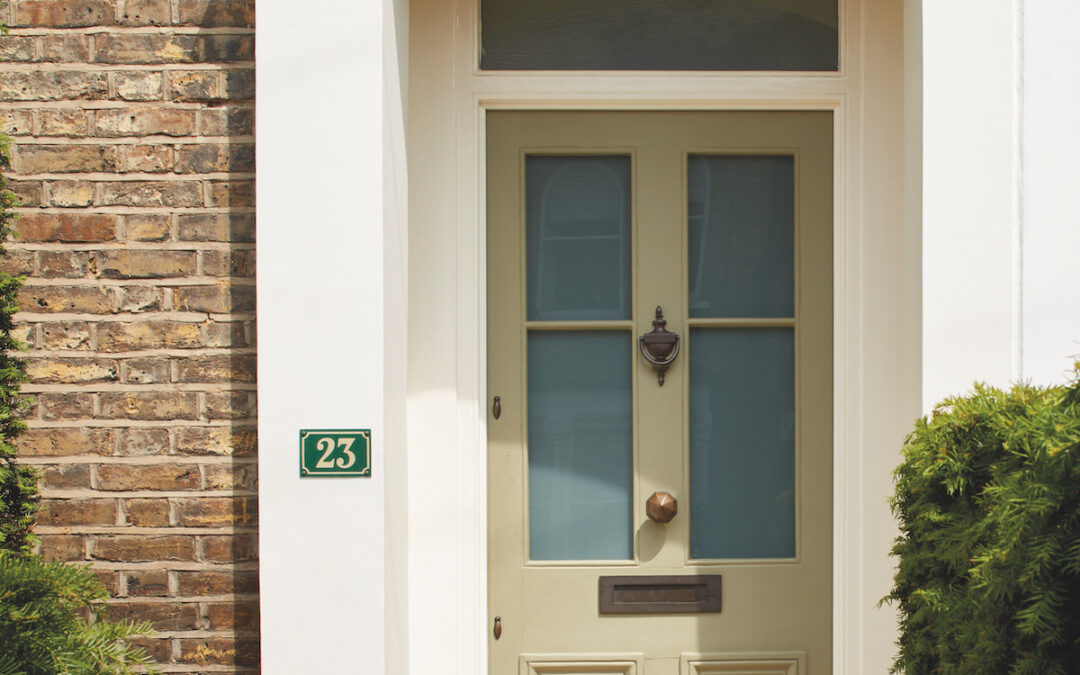When we walk up to a front door, before we knock, we have already set an impression of what lies beyond. Whether this is reinforced once that door is opened is another matter altogether. But, what I do believe, and which research shows, is that our conscious thoughts are much more tightly linked to our environment than we might realise.
I always advise clients that the expectation, when designing, starts from either the front garden, if you are lucky enough to have one, or from the front door leading into the hallway. The exterior of the front door is not an island – it forms part of the house and should be treated with the respect it deserves.
Let us start with the front door and porch. I am not advocating spending vast sums of money installing a new front door or, taking up the porch tiles. For simple and inexpensive works that many of us can do for ourselves, a beautifully painted front door is one. The colour should link in some way to the exterior and interior. Porches are either normally painted plaster or brickwork, but if kept leaf and cobweb free, along with a regular dust and wash down, they will say so much to the visitor and, more importantly, to you every day you return home.
We now move into the entrance hall. Here is an area that is extremely functional, providing access through the house and into various rooms. Normally narrow and in some cases starved of light, the need to improve this space to ensure it is both practical and aesthetically pleasing, is all important.
When dark, the tendency is to use white but, this is not always the best resolution. Painting in a slightly darker colour with lighter painted rooms beyond draws the eye through the space. Colours used to differentiate between spaces creates drama. If you are wary of dark wall colours, consider introducing darker tones in another way. Woodwork, the staircase and spindles, carpet or tiling all lend themselves to this perfectly. Introducing gleaming, reflective surfaces is another trick (gloss paint, lacquered furniture, mirrors).
The transition through the space should be clear and clutter free. So, away with visible coats and shoes. Consider pull out or hinged drawers which are easily commissioned for shoe storage and coat hangers placed in the under stairs cupboard. Flooring must be functional and hard wearing. Polished flooring will bring light into the space. I find coconut matting at the door practical. Sisal flooring is a most pleasing outcome, being both hard wearing and dirt resistant. Be aware, tiles and wooden flooring, whilst functional, require regular cleaning and maintenance.
Lighting must be functional and pleasing. An overhead lantern for task lighting is great when required. Everyday lighting could include wall lights, inset lighting at floor or ceiling level, or lamps for more subdued ambient lighting. The tendency is also to go for white ceilings but resist. Try using a softer colour that compliments the wall colour, or if feeling brave, paint the ceiling in the same as the wall colour or lighter, but using gloss, thereby reflecting the light and brightening the space.
This article first appeared in SE22 magazine.

